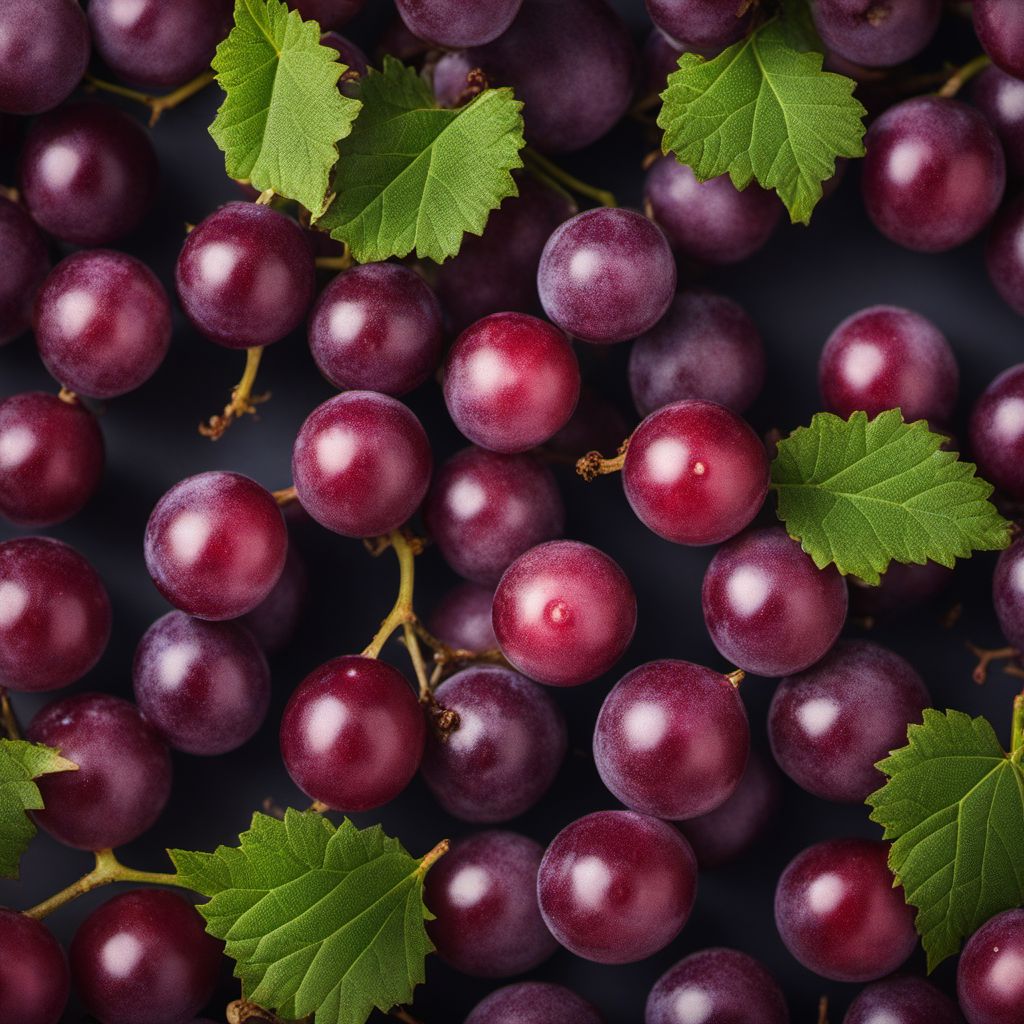
Ingredient
Muscadine grapes
The Southern Delicacy
Muscadine grapes are a unique variety of grapes native to the southeastern United States. Known for their thick skins and intense flavor, these grapes are a beloved ingredient in Southern cuisine and winemaking. With their sweet and tangy taste, muscadine grapes add a burst of flavor to both sweet and savory dishes.
Origins and history
Muscadine grapes have a long history in the United States, with evidence of their cultivation dating back to Native American tribes. These grapes were later cultivated by European settlers in the 16th century. Muscadine grapes thrive in the warm and humid climate of the Southeast, making them a cherished ingredient in Southern cooking and winemaking.
Nutritional information
Muscadine grapes are a good source of dietary fiber, vitamin C, and antioxidants. They contain resveratrol, a compound known for its potential health benefits, including anti-inflammatory and heart-protective properties. Muscadine grapes are also low in calories and fat, making them a healthy addition to a balanced diet.
Allergens
Individuals with grape allergies may experience allergic reactions to muscadine grapes. It is important to exercise caution and consult with a healthcare professional if you have known allergies or sensitivities.
How to select
When selecting muscadine grapes, look for plump grapes with a deep color. The skin should be firm and free from wrinkles or blemishes. Muscadine grapes are typically harvested when fully ripe, as they do not continue to ripen after being picked. If possible, choose organic or locally grown grapes to support sustainable farming practices and enjoy the freshest flavors.
Storage recommendations
To maintain the freshness and quality of muscadine grapes, store them in the refrigerator. Place them in a perforated plastic bag or a container with ventilation to prevent moisture buildup. Muscadine grapes are best consumed within a few days of purchase to enjoy their peak flavor and texture.
How to produce
Muscadine grapes can be grown in warm and humid climates, making them suitable for backyard cultivation in the southeastern United States. They require well-drained soil, ample sunlight, and regular pruning to ensure optimal growth and fruit production. With proper care, muscadine grape vines can thrive and provide a bountiful harvest.
Preparation tips
Muscadine grapes can be enjoyed fresh as a snack or used in a variety of culinary applications. They can be used to make jams, jellies, pies, and desserts. Muscadine grapes are also a popular choice for winemaking, producing wines with a unique flavor profile. Additionally, muscadine grape juice can be used as a base for refreshing beverages or incorporated into cocktails.
Culinary uses
Muscadine grapes are commonly used in Southern cuisine, where they are incorporated into dishes such as grape hull pie, grape jelly, and grape salad. They are also a popular ingredient in winemaking, producing wines that range from sweet to dry. Muscadine grapes can be found in various forms, including fresh, frozen, juice, and preserves.
Availability
Muscadine grapes are primarily cultivated in the southeastern United States, particularly in states such as Georgia, North Carolina, South Carolina, and Florida. They are also grown in other warm and humid regions around the world, including parts of Asia and Europe.
